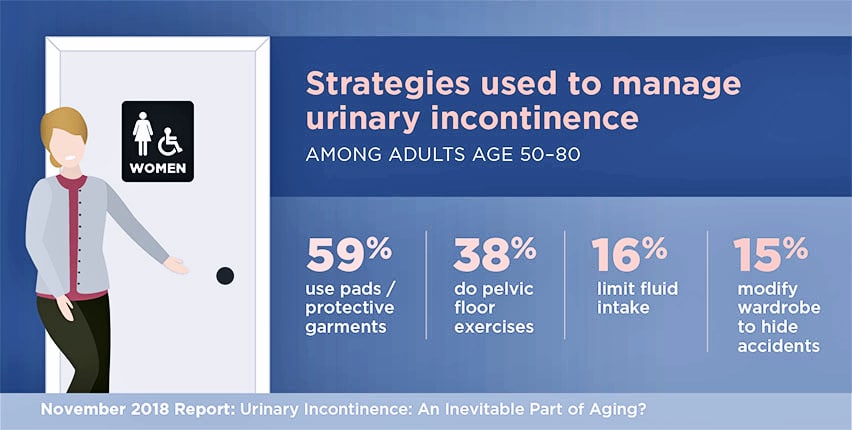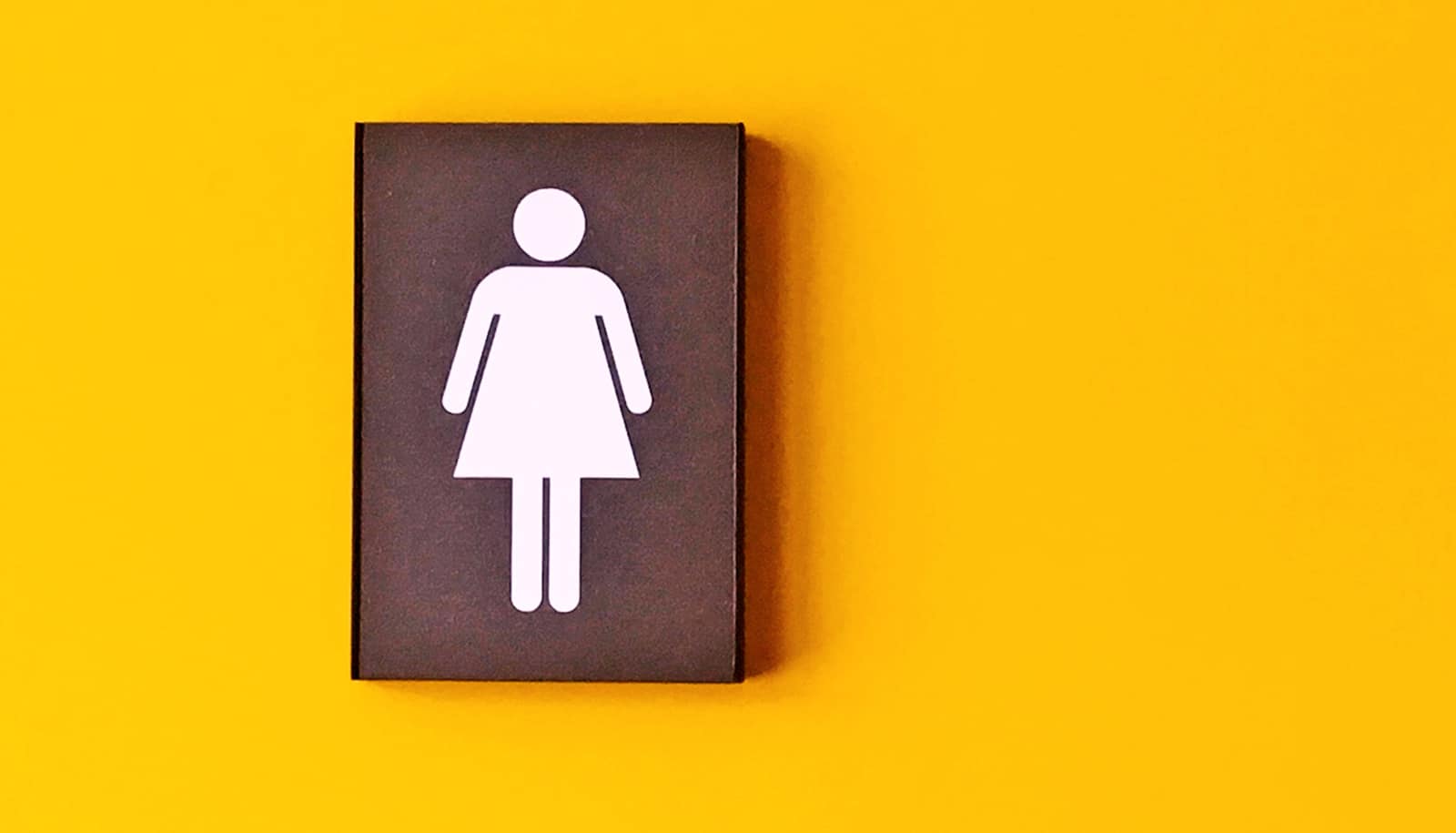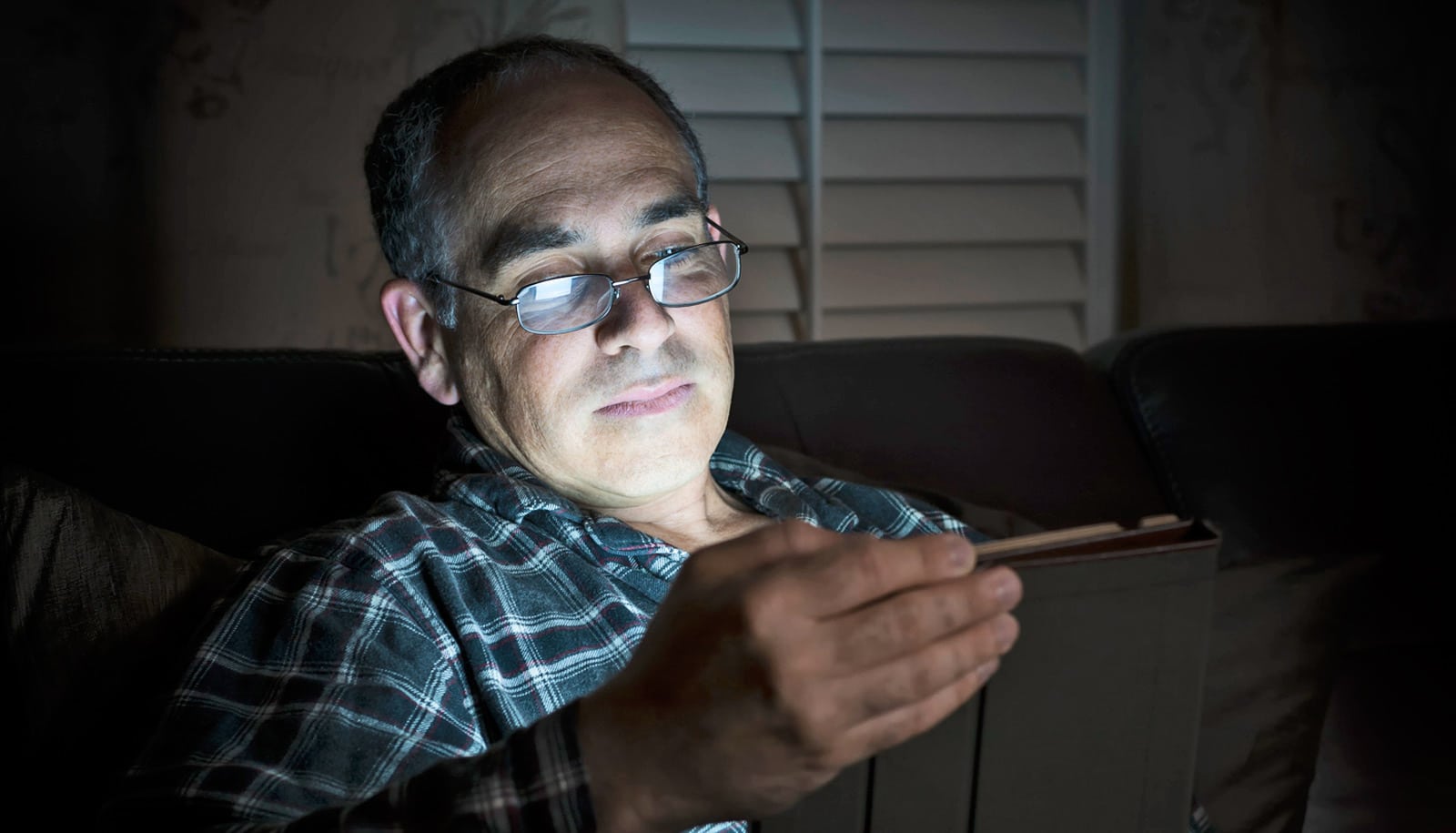Nearly half of women older than 50 say they are sometimes incontinent—a problem that can range from a minor nuisance to a major issue, according to a new poll.
Yet two-thirds of these women have not talked to a doctor about the sometimes embarrassing, little-discussed issue. And only 38 percent said they do exercises that can strengthen the muscles that can help.
Of more than 1,000 women between the ages of 50 and 80 who answered the poll, 43 percent of women in their 50s and early 60s said they had experienced urinary incontinence, as had 51 percent of those age 65 and older.
The poll shows women are finding ways of coping on their own—including wearing pads, using special underwear, wearing dark clothing, and limiting fluid intake.

Not inevitable
The new findings from the National Poll on Healthy Aging suggest that more physicians should routinely ask older female patients about incontinence issues.
“Urinary incontinence is a common condition that may not be routinely screened for in primary care, yet it can impact a woman’s quality of life and health, and is usually treatable,” says Carolyn Swenson, a urogynecologist at the University of Michigan. “It’s not an inevitable part of aging and shouldn’t be overlooked.”
Swenson studies delivery of women’s health care, especially related to the pelvic floor—the structures and muscles that support the bladder and reproductive organs. There are non-surgical and surgical options for treating incontinence, she says.
Of the women who said they’d experienced at least some urine leakage, 41 percent described it as a major problem or somewhat of a problem. One-third of those with leakage experienced an episode almost every day. Nearly half worried that it would get worse as they got older.
The most common triggers were coughing or sneezing—which 79 percent experienced—and trying to get to a bathroom in time, which 64 percent experienced. But 49 percent said they’d leaked when laughing, and 37 percent said it happens when they exercise.
“The last thing that older women should be doing is avoiding exercise or not being able to enjoy other activities that make life worthwhile,” says Preeti Malani, director of the poll and a professor of internal medicine who has special training in geriatric medicine. “We hope these findings will help spur conversations between women and their health care providers, so that activities aren’t limited.”
Kegel exercises
Women reported doing many things to cope with incontinence, but only 38 percent had done Kegel exercises, which involve squeezing and releasing the muscles of the pelvic floor. Such exercises can be an effective treatment when done correctly and consistently, especially as part of pelvic floor physical therapy with a specialized physical therapist.
“It’s both surprising and disheartening to see that so many women seem to believe that incontinence is just a normal part of aging because it’s not,” says Alison Bryant, senior vice president of research for AARP. “A lot of women are unnecessarily limiting their daily activities and not enjoying life fully because of a condition that can often be remedied.”
Women older than 65 were more likely to have talked with a medical provider about their incontinence than younger women. So were women who reported being embarrassed by their urine leakage or said it was a problem for them.
Among women who didn’t talk with their doctor about their urinary incontinence, 22 percent said they didn’t think of urine leakage as a health problem, so they didn’t discuss it with their doctor. But many treatment options now exist for urinary incontinence, Swenson says, and Medicare and private insurers routinely cover both medical and surgical treatments.
Source: University of Michigan

